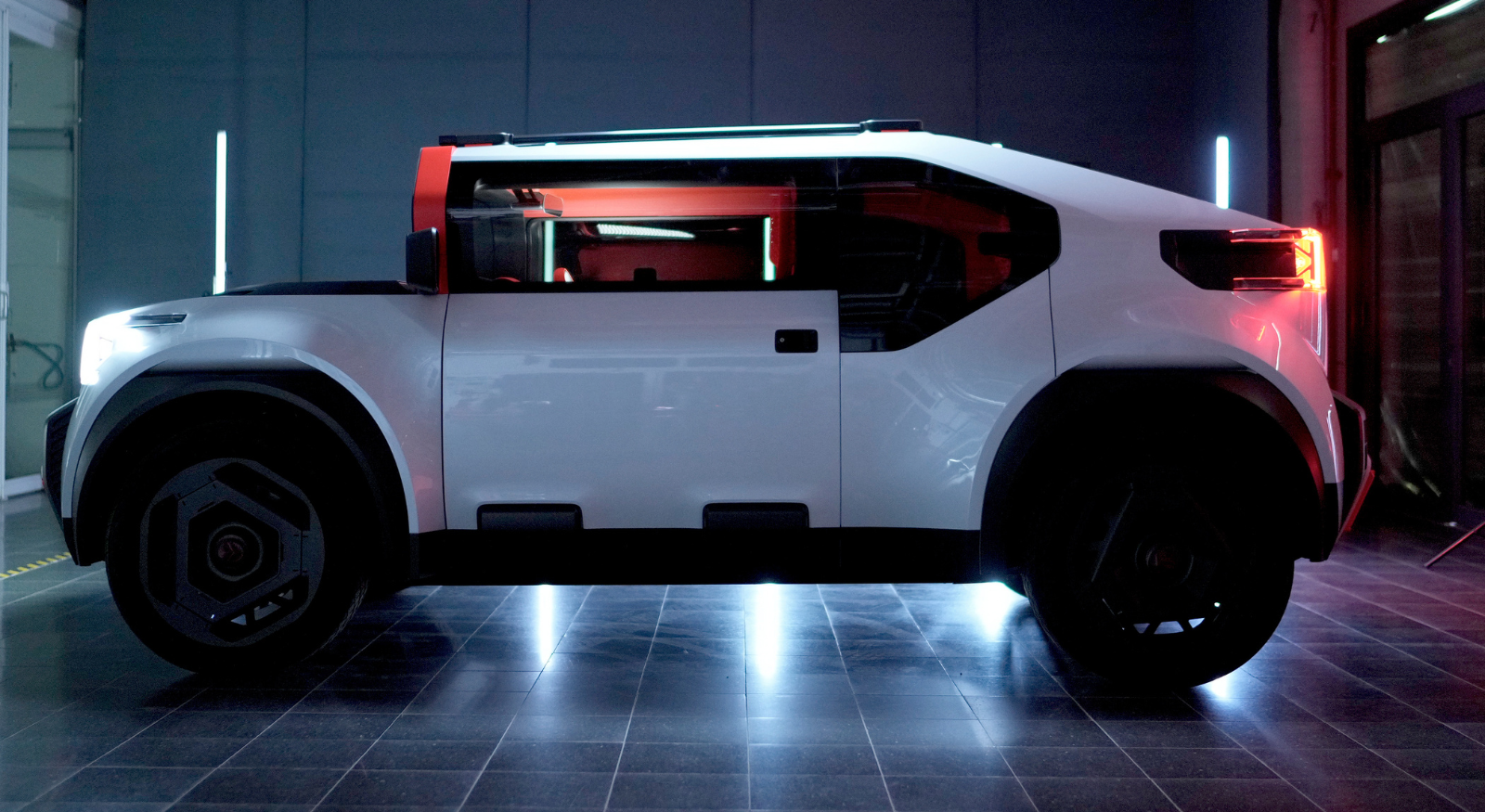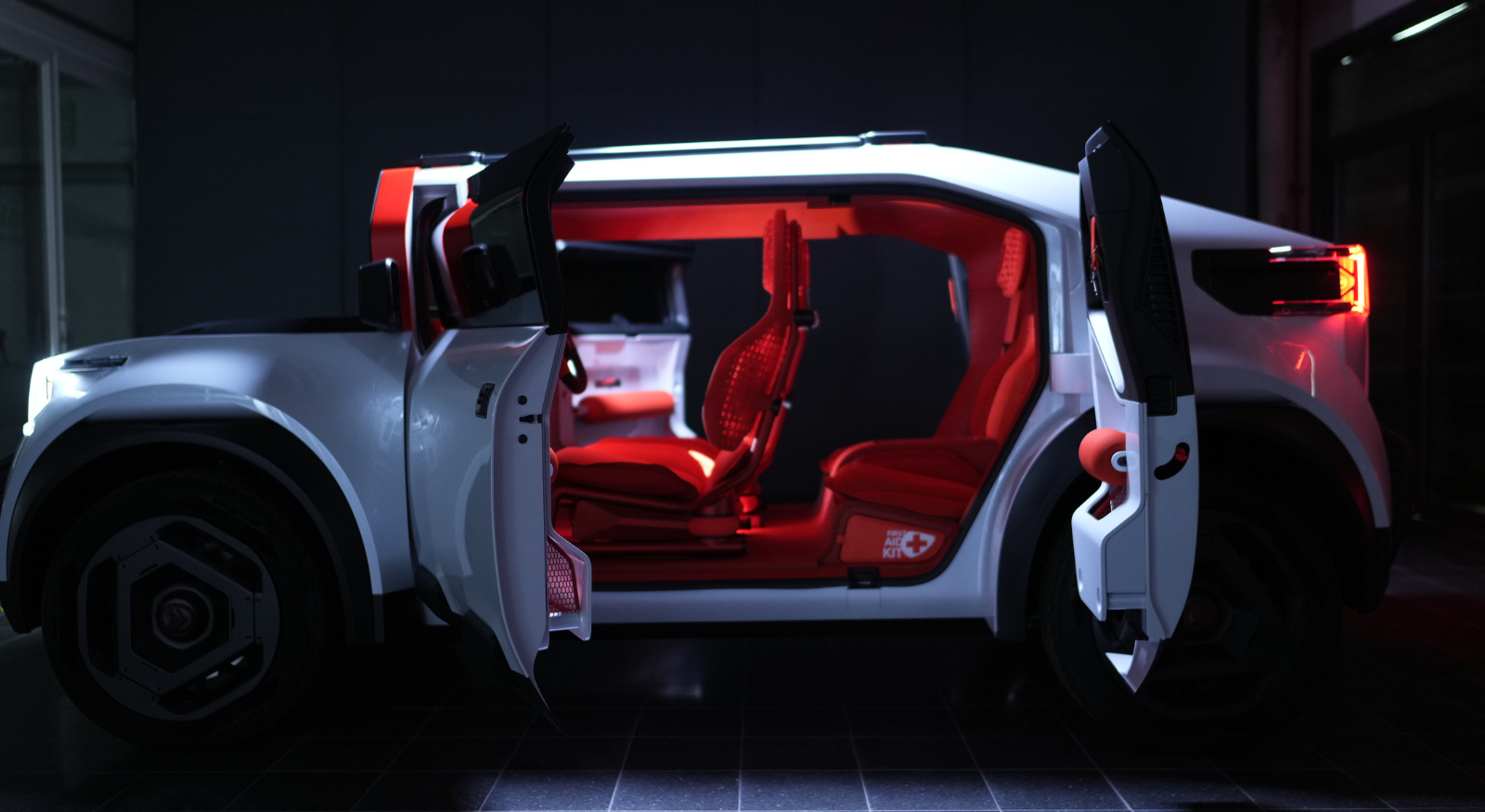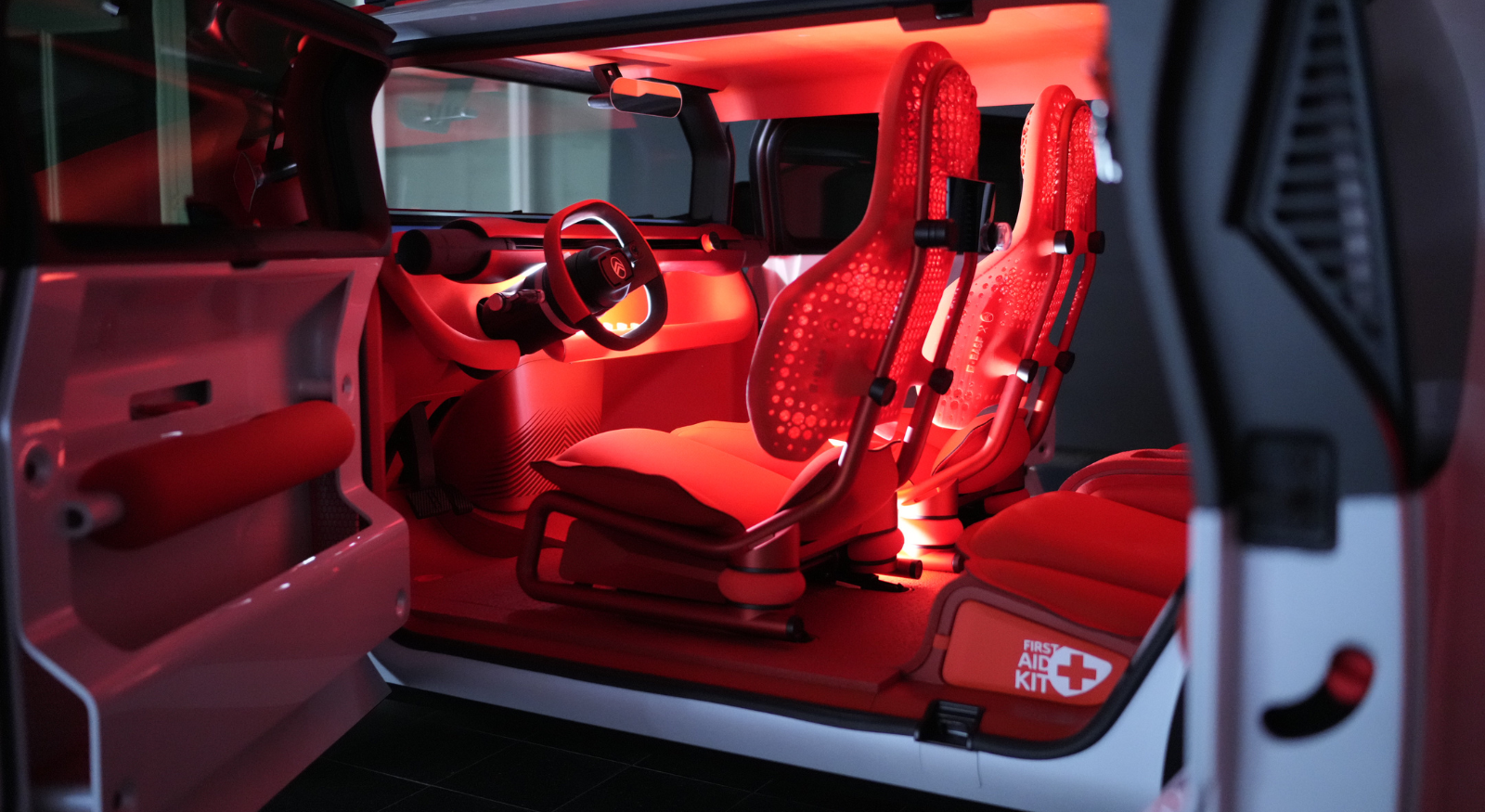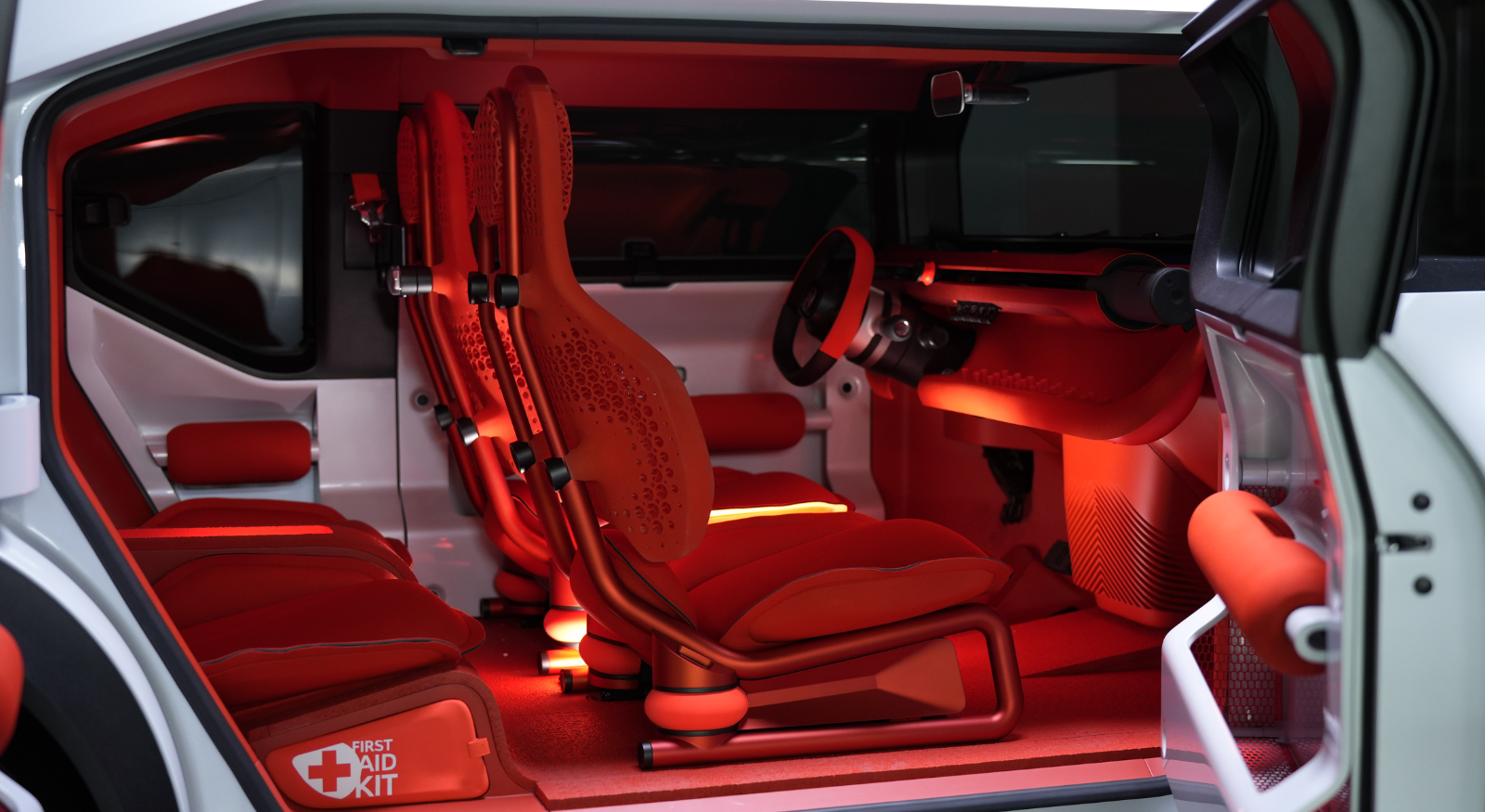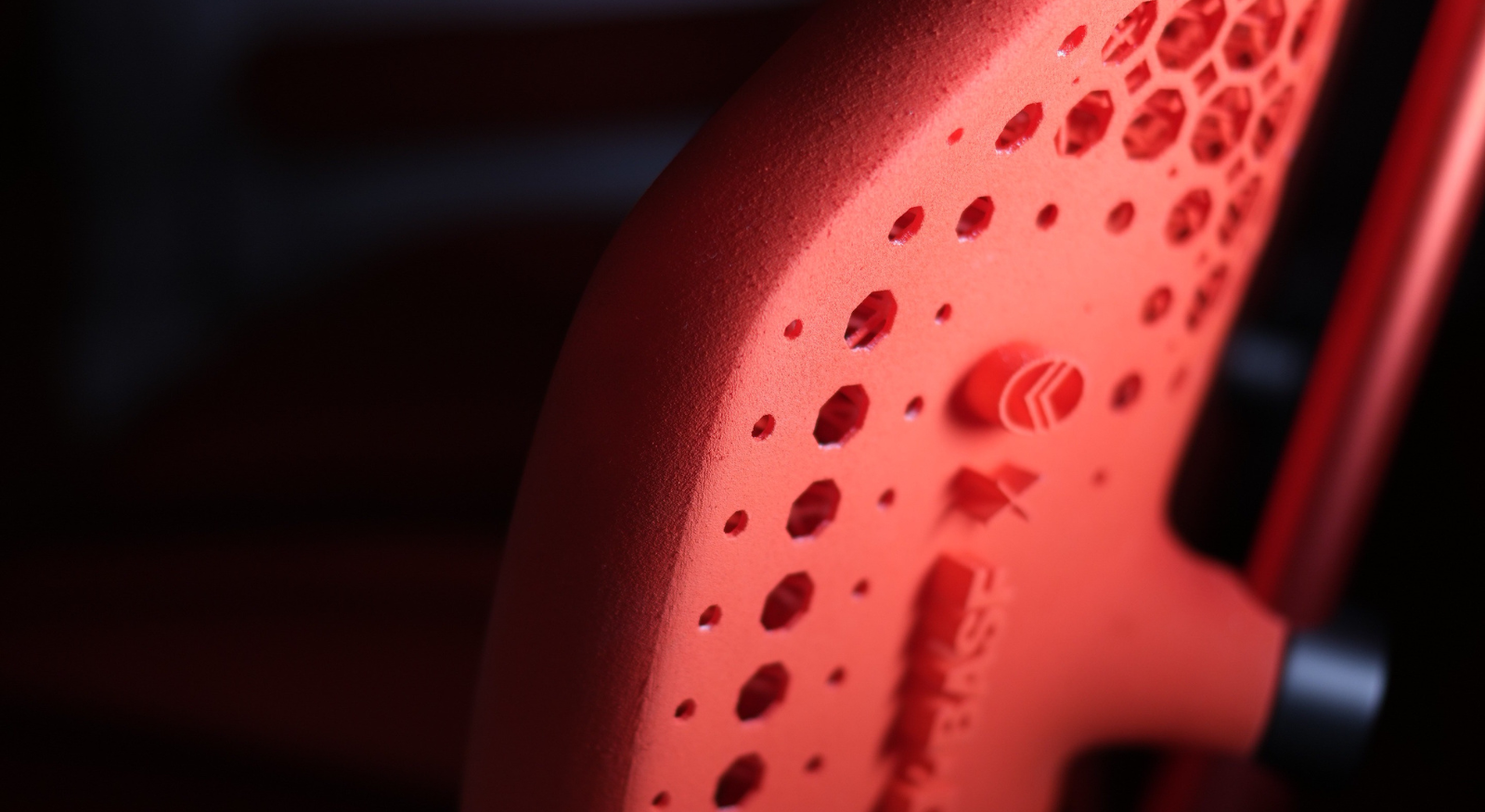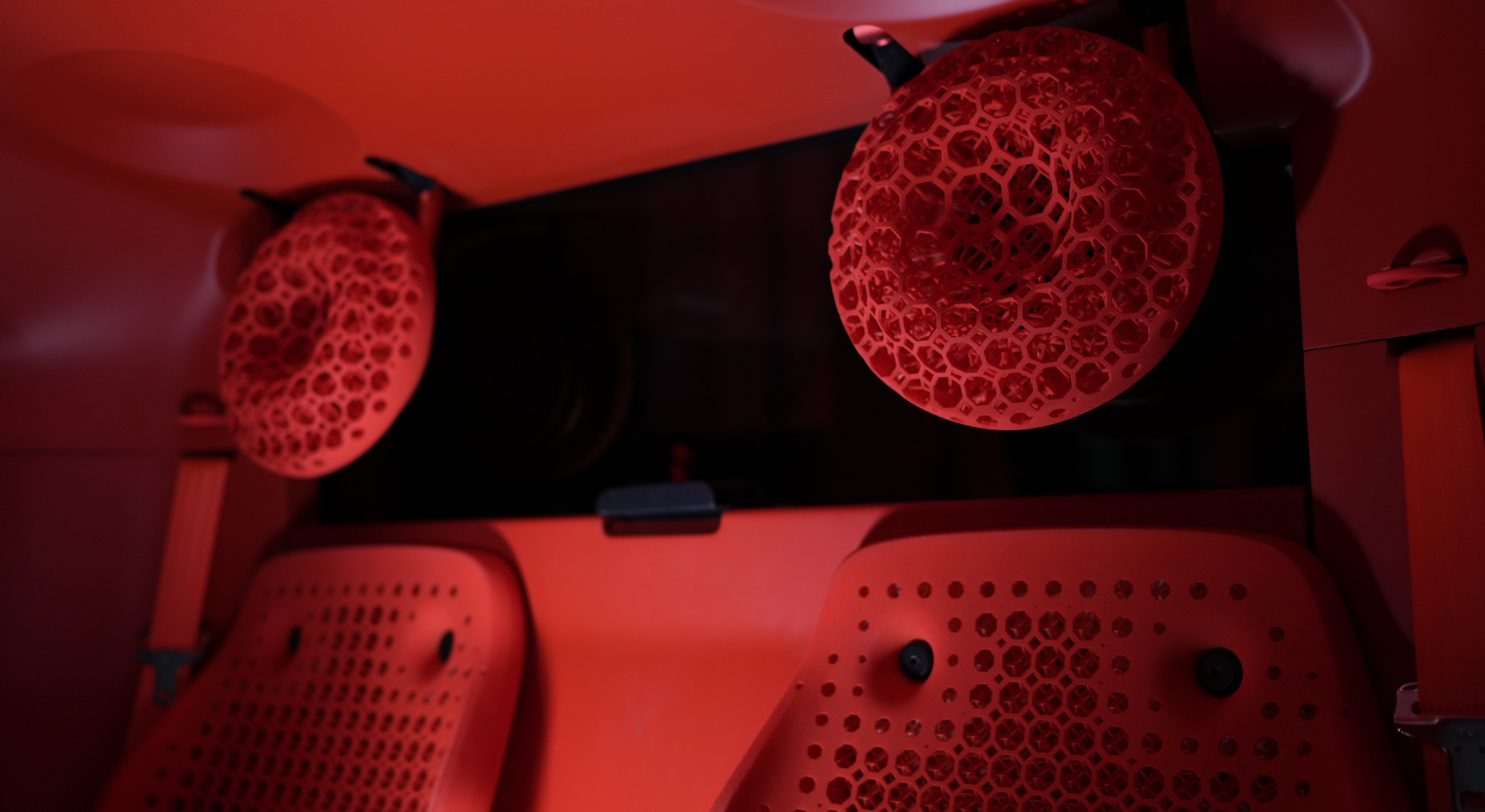Driving Innovative Concepts Forward to Create a More Sustainable Future
BASF is breaking new ground through their partnership with Citroën to create a new fully electric car concept – The Oli [all-ë]. This project is not about the fastest or most luxurious car but is a true testament to how much can be saved by reducing weight and resource usage to move towards a future of sustainable mobility. A minimalistic approach paved the way for a refreshing and innovative design with various components being radically reinterpreted and constructed using materials within a different context. The team was using plastics, coatings and 3D printing from BASF in a way that had never been done before, resulting in a truly innovative and unique design.
By asking questions such as: What are the requirements for a vehicle of the future? Is it enough to use eco-efficient materials? Or can entire components be eliminated? Can simplicity lead to greater efficiency as well as enhance aesthetics? In response to these queries, BASF pushed the limits by creating a vehicle concept that signals responsibility, withstands adventures, is multifunctional and enables an easy and joyful ride. Our plastics, coatings and 3D printing technology supported Citroën’s design vision, giving their ideas a bold, daring and always optimistic look and feel.
As part of this project, Forward AM contributed with the innovative lattice design that combined the worlds of both designers and engineers. The seats are a visionary highlight of the concept vehicle, as the task of creating a 3D-printed component of this size was a challenging experiment. Sculpteo, a brand of BASF, realized the seats along with twenty other parts for this project with Ultrasint® TPU88A. This innovative material was perfectly suited to generate the complex 3D-printed geometries needed for the seats that are both simultaneously very flexible as well as fully functional. As a result, the team succeeded in developing both a backrest as well as a headrest that follows the “one material” approach – meaning that many parts in the car interior are made from the same material family. By embracing this approach, mechanical recycling is made easier at the end of the product life cycle. While at the same time, the 3D printing process ensures low-waste production and a durable material for a long product life cycle
The vehicle seating concept was further enhanced by protecting the seats with an elastic waterborne coating esulting in increased durability and allowing the material to withstand all stresses on the substrate. No pretreatment or primer is required, even on smoothed surfaces, so there is no need for an additional outer layer of foam or leather. As a result, the complexity of the seat assembly is reduced.
Learn more about this collaborative project through several videos and interactive features at Citroën Concept Car (basf.com) and find out how BASF, Forward AM and Citroën are breaking new ground and working together to build a more sustainable future.
Next Steps
Reference Links and Documents
Get in touch
Do you have questions about our materials, technologies or services? Get in touch now!
Share this page
Other Blog Posts
Forward AM and the UltiMaker Factor 4 – Delivering Industrial-grade Performance
Forward AM offers a wide range of high-performance and certified materials that open a huge range of new 3D printing applications…
LAYERbyLAYER: A Conversation with Jörg Gerken of rpm rapid product manufacturing
Welcome to LAYERbyLAYER: Interviews with 3D Printing Services, a unique series brought to you by BASF Forward AM.
LAYERbyLAYER: A Conversation with Janet Dickinson of Endeavor 3D
Welcome to LAYERbyLAYER: Interviews with 3D Printing Services, a unique series brought to you by BASF Forward AM.
